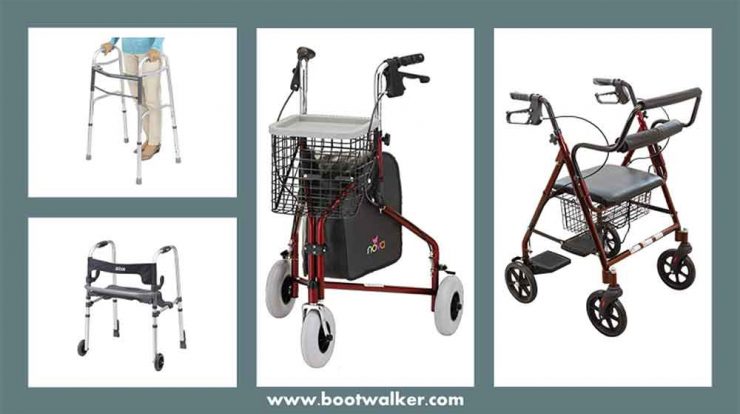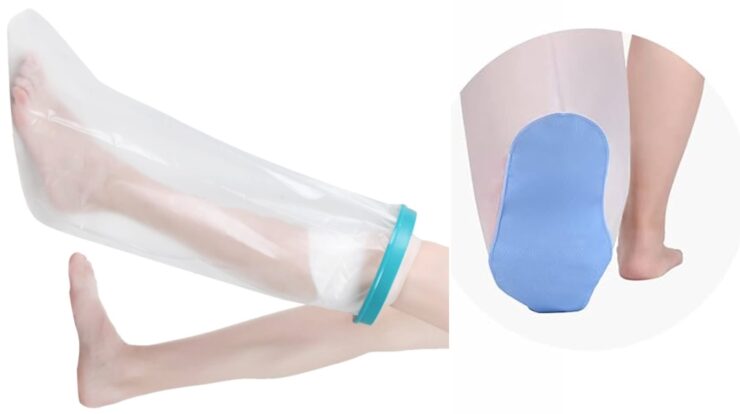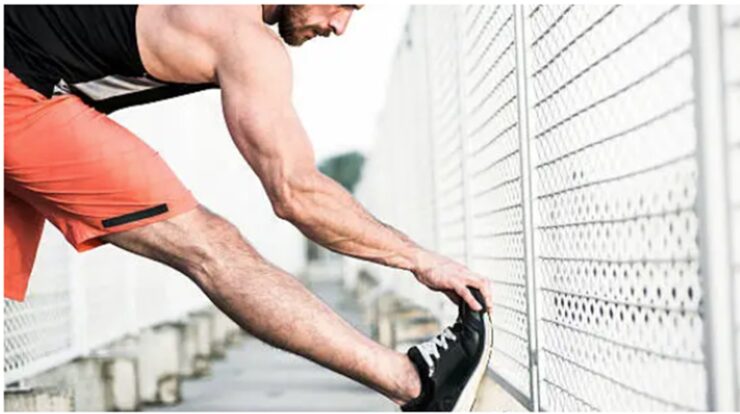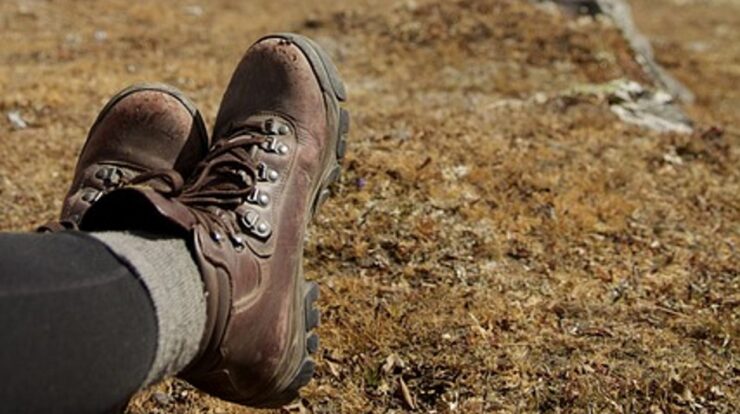
What are the best walkers for the elderly? Surprisingly, this is a question that is asked many times. I, therefore, decided to do micro research to get you the information that you need so that you can make the best possible decision.
When you look around and observe your environment you would realise that most people that use walkers are those over the age of 65, in other words, the elderly. This is by no means to say that young people do not use walkers to improve their mobility.
Young people sometimes use a walker because of an injury they are recovering from that is so severe that they cannot put too much pressure on the leg. Sometimes, they may need the assistance of the walker as part of a physiotherapy session to help them to strengthen the leg after major surgery.
People suffering from poor mobility are a prime candidate for the walker, they include those that suffer from Osteoporosis, Multiple Sclerosis, Parkinson’s Disease, or hemiplegia (when half of a person’s body is paralyzed, often due to a stroke) or other debilitating conditions.
Choosing Walkers For The Elderly
Choosing a walker should not be taken lightly as a matter of fact, as with most medical devices, it should be done with care and precision. It is much better to do the selection of a medical device with a medical professional or under their keep guidance.
A qualified medical professional that is familiar with your particular circumstances is always best to give you personal advice.
Reasons For Using A Walker
No one likes to be walking around with extra devices that let others think that they are weak and feeble but the walker serve the purpose of increasing your ability to walk independently and safely.
With the walker, you generally can walk for a longer distance and at the same time experience less pain and discomfort while walking.
In selecting the best walker there are several things that you will have to consider:
1) Use a walker for Balance: As you age you lose your ability to stand balanced and upright and you may find it difficult to balance yourself without falling over. This condition is called “postural sway”, it is your unconscious correcting your muscles in an attempt to make you stable on your feet.
The walker is now seen as a blessing and gives you a wider base of support when walking, helping to overcome this “postural sway” and keep them from falling over because it adds stability and your hands can lend support to prevent this postural sway.
2) Use a walker for Weight Bearing: After a broken foot or a major foot surgery, some people find it difficult to tolerate their body weight through their legs due to pain or weakness.
You can use the walker as a walking aid by using your arms to assist you in pushing down on the frame to take much of your body weight off your legs. This will reduce the pressure on the injured leg and help to correct posture and gait.
3) Use a walker for Endurance: Not having enough strength in the leg will reduce your mobility. A walker can act as an energy-saving device for a person that has breathing restrictions, heart disease, or fatigues quickly. Some of the walkers have a seat where you can rest a bit.
4.) Use a walker to Build muscle strength and agility: A walker can be used to help in the building of muscles following a stroke, hospitalization, lack of activity, or if you suffer from muscle strength and agility decline.
In these circumstances, walkers help you rebuild your muscles and regain optimal mobility by providing the support that you need to strengthen your mobility a little bit at a time.
Suitable Types of walkers For The Elderly And Infirmed:
There are different types of walkers to choose from. Most people would like to go for the cheap one but sometimes quality and fit for purpose is more important than price.
Since these walkers are important price should never be the only factor, the more expensive ones tend to have more features and are worth the extra expense.
1) Basic Frame Walker with rubber tips – no wheels
The basic frame walker with rubber tips provides the most support and stability. There is no risk of the device slipping from the hand and rolling away. This walker provides enough stability, will allow you to control your body and learn to be upright.
This upright posture will cause you to be more steady on your legs because most of your weight will be placed on your arms and less on your legs. The basic frame walker is made of lightweight material and must be picked up and move forward with every step.
It is perfect for when stability is more important plus it creates a smooth walking rhythm resulting in a better gait. The main advantage of this basic framework is that it is perfect for very short distances, like moving from one chair to the other or moving to the bathroom.
A tray can be attached for carrying small items like sanitary supplies when going to the bathroom. It is not suitable for going long distances because the constant lifting will cause your hands to become fatigued.
2) Basic Frame Walker with two 5″ wheels at front and 2 glides at back.
The basic frame walker with two 5” wheels at the from and 2 glides at the back allows you to put more of your body weight on your legs.
This assumes that you have more mobility in your legs and therefore do not have to put excessive pressure on your arm making your walk more naturally.
With this walker, you can stand within the frame and therefore get a lot of support. Instead of “lifting” the walker to move forward, you just “push” it forward. It is designed to slide as you walk, rolling easily on the front wheels while the back glides slowly and controls the speed of movement.
These are the most common walkers used for indoors as they are light and allow you to walk with a more natural gait
Advantage: Takes up less space when manoeuvring in the house and folds for storage. Good on carpets. Attachable trays are available for carrying small items.
Disadvantage: The walker is not that great for outdoor use. The small wheels are the problem, they can get stuck easily on rough terrain and cause tripping.
3) Walker with 3 wheels, seat, and braking system.
The 3-wheeled walkers are not normally recommended because of the instability. 4 wheels are more stable than three wheels.
4) Walker with 4 wheels, seat, and braking system.
The walker with 4 wheels, seat, and braking system are suitable for outdoors. The wheels are much bigger and allow for freer movement.
These walkers tend to be over 20lbs but there are some very lighter ones (under 15 lbs) that are suitable for indoor use for someone who gets tired easily and may need to rest frequently).
The 4 wheel walker is suitable for you if you are more independent and need the walker for balance or weakened bones and the weight of the normal walker is too heavy for you properly use.
Advantage: these walkers are lighter and easier to fit into the back of a car.
Disadvantage: the walker is light, if a lot of force is needed to sit down on it, the walker may slip backward causing you to fall and hurt yourself.
What is a rollator?
A “Rollator” is a regular weight walker with wheels. Generally they weigh around 20 lbs. You have a lot of options when it comes to selecting the best ones. Therefore selecting a good one may be a little challenging.
Here are a few things that you need to look out for when selecting a good one:
Always seek walkers with frames that are well-constructed. Walkers with large 8″ wheels; comfortable, with adjustable hand grips, easy to manage hand breaks; adjustable back supports, seats with adjustable heights; and a carry basket for equipment or luggage are the best ones.
The ones with the seats that can be folded up giving you more space to move into the frame are a really good choice.
Selecting the ones with wider wheelbases are good. You do not want to trip on the frame, That tend to happen, if you walk with your legs wide apart for balance.
If you have the extra money choose one with slow down brakes attached to the wheels, just in case your hand strength is not enough to operate the brakes properly, these would be a lifesaver.
Depending on your needs, there are some walkers with holders for oxygen tanks, trays for carrying stuff and bags for carrying personal effects. These are excellent choices.
Advantages: The walker will support you by providing structure or support for you to stand upright.
It is also very good, as a tool, to help you to exercise better, enjoy the greater outdoors, increasing the distance that you can travel and therefore increasing your walking speed and endurance.
In basic terms, the walker has a seat allowing you to walk longer distances and sit down whenever tired.
Disadvantage: If your home is small then the rollator can be a bit too bulky to work properly indoors.
Measuring for Walkers For The Elderly
Getting the measurement for the different walkers for the elderly is important. In this part of the article, the information will be shared about measurement for walkers and rollators.
Measuring A Walker Walkers For The Elderly
It is important for you to measure and fit the walker correctly in order to receive the best benefit.
A person that is fragile and with an increased risk of falling is in need of the walker and for their safety it is important to get it properly fitted. A well trained person is normally the best person to do the fitting.
If you so happen to be discharged from the hospital then either an occupational therapist or physiotherapist is perfectly trained and equipped with the necessary knowledge to assist you. The are suitable trained.
There are a few things that are normally considered when measuring the walker correctly. The shoe that the person will wear most of the time when using the walker.
The shoe should be comfortable and supportive of the ankle and lower foot. The height of the walker must be measured with this in consideration.
The next thing is to choose the right type of walker that is the most suitable based on your personal circumstances.
A basic frame walker, the one with or without wheels, will allow you to move into the walker and walk more upright.
The best way to take the measurement is for you to stand in the frame with your arms at your side.
At this point the crease of your wrist will be lined up with the handgrip of the walker frame with the elbows bent at approximately 15 degrees. A 15 degrees bend at the elbows is the strongest position for pushing down.
Adjust down the walker frame it the height of the frame so that your shoulders are not elevated too high.
When walking with the frame try not to put it too far forward. When you do this you become unstable and risk falling over.
Measuring A Rollator Walkers For The Elderly
A rollator walker comes with wheels. These wheels will not allow you to put as much pressure on it as you would be able to do with the regular walker.
As a result the fitting is much different. The rollator is for you if you have more strength in you legs. Therefore, that much pressure on you arms is not required.
While using a rollator the emphasis it more on your posture than on the strength and position of your wrist, making the wrist crease method redundant.
Your team has to take into consideration how much are you bent over if at all. If you are bent over the walker must be raised enough to support your upper body.
The frame must be wider if your feet hit the frame when you walk. More importantly, the seat height is a great concern. The seat must be made high enough to facilitate easy standing and sitting and at the same time allow your feet to touch the ground.
These seats are much more comfortable then park benches that tend to be lower and very uncomfortable to use if you have mobility issues.
Proper measurement and fitting of the walker will prevent falls, increase well being, increase strength in the legs and independence.
Walkers vs rollators
The difference between a walker and a rollator are the wheels. A walker has four legs with rubber tips. All four legs remain in contact with the ground when you are moving.
On the other hand, a rollator is called a rolling walker with a seat, four wheels in contact with the ground, a brake system and a carry basket to carry essential items.
The rollators are large and can be cumbersome to carry around and fit into a car.
Conclusion:
Hope you found the information in this article about Walkers For The Elderly And Infirmed useful. As us per usual, remember that the information provided in this article is not medical advice and that you should always seek the advice of your medical team.
Your medical professional is the ones authorized to give the information required for you to make appropriate decisions.
It is always advisable that if you purchase a frame walker or any other types of walkers, rollators or wheelchairs from a Home Health Agency or a Health Equipment provider to always ask if they have the necessary training to provide appropriate information.
Have a story to share about walking with or purchasing your walker do share it here. Tell us about it in the comment section.






